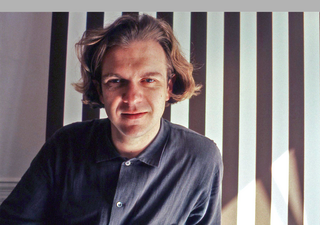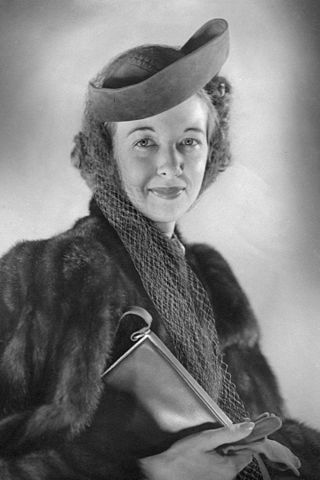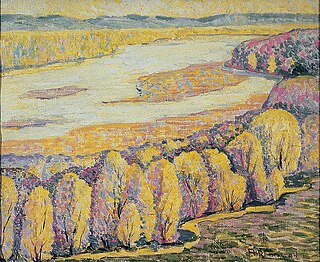
The Walker Art Center is a multidisciplinary contemporary art center in the Lowry Hill neighborhood of Minneapolis, Minnesota, United States. The Walker is one of the most-visited modern and contemporary art museums in the U.S.: together with the adjacent Minneapolis Sculpture Garden and the Cowles Conservatory, it has an annual attendance of around 700,000 visitors. The museum's permanent collection includes over 13,000 modern and contemporary art pieces, including books, costumes, drawings, media works, paintings, photography, prints, and sculpture.

The Joslyn Art Museum is a fine arts museum in Omaha, Nebraska, United States. It opened in 1931 at the initiative of Sarah H. Joslyn, in memory of her husband, businessman George A. Joslyn. Since its opening there have been multiple building expansions to house the museum's growing collection. It is the only museum in Nebraska with a comprehensive permanent collection. Some of the main works in the museum are part of the nineteenth and twentieth-century collections of American and European artists.

The Samuel P. Harn Museum of Art is an art museum at the University of Florida in Gainesville, Florida. It is in the UF Cultural Plaza area in the southwest part of campus.
The Hixson–Lied College of Fine and Performing Arts is the fine and performing arts college at the University of Nebraska–Lincoln (NU) in Lincoln, Nebraska. The college was established on July 1, 1993 as the College of Fine and Performing Arts, combining arts-focused programs from across the university. It was renamed in 2000 after receiving an $18 million donation from Christina Hixson and Lied Foundation Trust. Most of the college's facilities are located in the southwest corner of NU's City Campus in what is sometimes referred to as the "Arts Quadrangle." Andy Belser has served as dean of the college since 2022.

John Raimondi is an American sculptor best known as a creator of monumental public sculpture, with works throughout the United States and several European countries. He lives and works in Palm Beach Gardens, Florida.

The International Quilt Museum at the University of Nebraska–Lincoln in Lincoln, Nebraska is the home of the largest known public collection of quilts in the world. Also known as Quilt House, the current facility opened in 2008.

Lyman Emmet Kipp, Jr. was a sculptor and painter who created pieces that are composed of strong vertical and horizontal objects and were often painted in bold primary colors recalling arrangements by De Stijl Constructivists. Kipp is an important figure in the development of the Primary Structure style which came to prominence in the mid-1960s.

Julian Dashper, was regarded as one of New Zealand's most well known contemporary artists.

The MacKenzie Art Gallery is an art museum located in Regina, Saskatchewan, Canada. The museum occupies the multipurpose T. C. Douglas Building, situated at the edge of the Wascana Centre. The building holds eight galleries totaling to 2,200 square metres (24,000 sq ft) of exhibition space.
Michael Francis James is an American artist, educator, author, and lecturer. He is best known as a leader of the art quilt movement that began in the 1970s. He currently lives and maintains a studio in Lincoln, Nebraska.

Lincoln, Nebraska is the home of the state capitol of Nebraska, the University of Nebraska and has history dating back to the mid 1800s. A list of tourist attractions that can be found within the city are as follows.

Claudia Alvarez is a Mexican American painter and sculptor who has worked as an artist in residence in Mexico, Switzerland, France, and China. Alvarez's solo exhibitions include Claudia Álvarez: A Moment in Between at the Acércate at the National Arts Centre, Mexico City; Girls with Guns, Scott White Contemporary Art, La Jolla, California; Falling, Museum of Nebraska Art, Kearney, Nebraska; Silence Water, Museum of Art Contemporary Yucatán, Mérida; American Heroes, Blue Leaf Gallery, Dublin; Things of a Child, The Latino Museum, Omaha, Nebraska; and History of Immigration, Metropolitan Community College, Omaha, Nebraska. Alvarez is based in New York City.

Eloise Andrews Kruger was an American miniature collector from Lincoln, Nebraska, who was known for her collection of historically-accurate American miniatures.

Carol Haerer (1933-2002) was an American artist known for abstract painting in the vein of Minimalism and Lyrical abstraction.

Floating Figure is a 1927 sculpture by Gaston Lachaise.
Aaron Gunn Pyle was an American painter known for his contributions to regionalist painting. His work is closely tied to the Midwestern United States, the region where he was born and spent most of his life.
Jane Gottlieb Sauer is an American fiber artist, sculptor, gallerist, and educator. She is known for her abstract waxed linen sculptures, sometimes referred to as "closed baskets". Saur founded the Textile Art Alliance; and formerly owned the Jane Sauer Gallery (2005–2013) in Santa Fe, New Mexico.

Alice Righter Edmiston (1974-1962) was an American regionalist painter and printmaker who taught at universities and contributed to various art organizations in Lincoln, Nebraska and one in New York City. In Early Nebraska Women Artists she is described as an impressionist-influenced artist following modernist trends.
Charles Rain was an American Magic Realist painter during the 20th century.
Sara W. Moore founded the Haydon Art Club in 1888. It was named after the British history painter, Benjamin Robert Haydon. The goals of the club was promotion of community within in art clubs in and out of schools. It was the forerunner of the Nebraska Art Association.


















